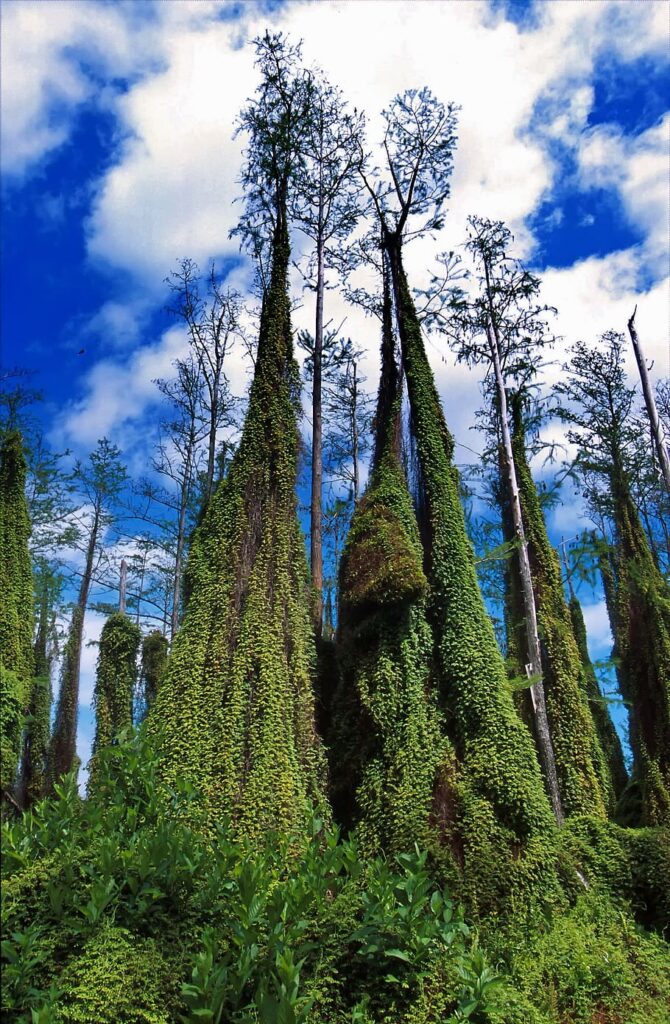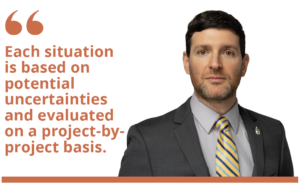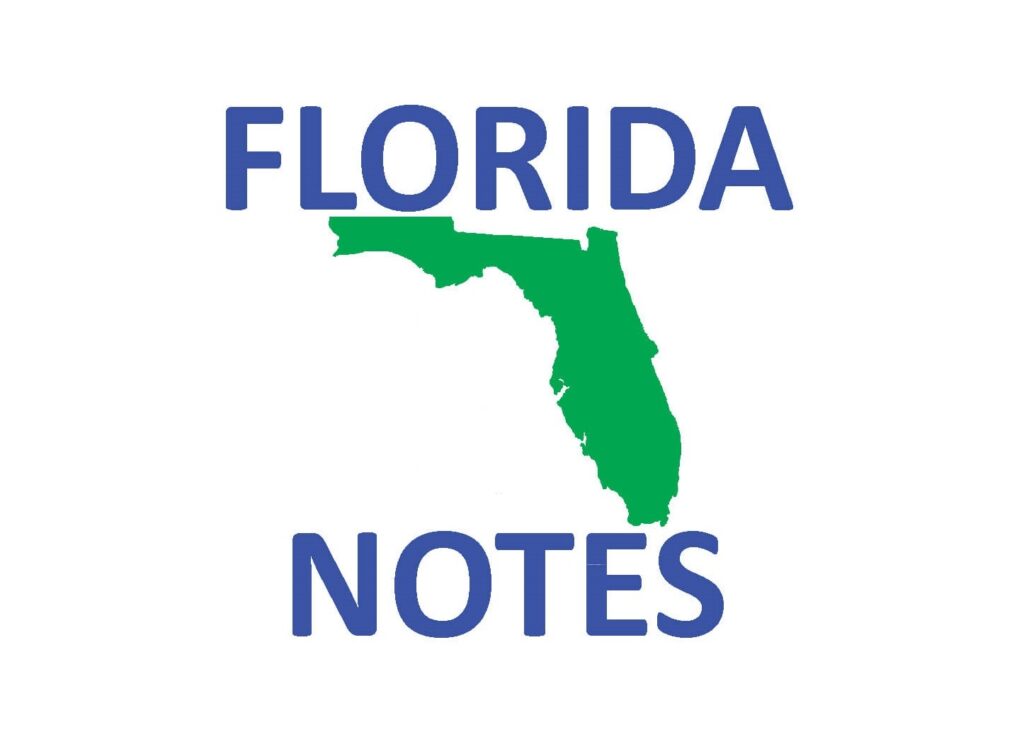By BLANCHE HARDY, PG
The Southwest Florida Water Management District, U.S. Department of Agriculture, and a leaf eating moth are fighting back against the threat of the highly invasive Old World climbing fern, Lygodium microphyllum, to prevent the climbing fern from infesting the 560,000-acre Green Swamp.

Neomusotima conspurcatalisis (Brown Lygodium moth) is a natural enemy of the Old World climbing fern and was selected for use because it can only eat the targeted climbing fern as its primary source of nutrition. The District is employing the moth in the Flatford Swamp in Manatee County.
The USDA and the District are also releasing two bio-control organisms that co-evolved with the climbing fern into the Green Swamp East Hampton Tract in Polk County. In this exercise, 600,000 Lygodium mites and 50,000 Lygodium moth caterpillars have been deployed.
The Old World climbing fern is a recently established invasive vine currently spreading northward from south Florida. The climbing fern is native to Africa, Asia, and Australia. The invasive species was first recorded in the late 1950s in south Florida. The climbing fern develops dense mats that engulf and eventually kill trees, shrubs and plants, resulting in degraded wildlife habitats. The Old World climbing fern can grow vertically into the tree canopy, reaching heights in excess of 60 feet. The vines can grow up to 90 feet long.

The invasive species has been detected and treated as far north as Hernando, Lake, and Sumter counties. A single fertile leaf can produce 28,600 spores. Once airborne, each spore is capable of producing a new population of the vine several miles away. Between 1993 and 2005, the District reports the fern’s infestation increased from 27,000 acres to 122,787 acres in Florida.
The Old World climbing fern is flammable and poses a fire threat through its blanket-like structure’s ability to convey fire well into wetland and swamp areas that typically provide a barrier to controlled burns and wildfires. Because the climbing fern grows into the treetops, fire can impact the entire span of the tree potentially resulting in the death of otherwise fire-tolerant trees.
“If we allow Old World climbing fern to become firmly established, it will be very difficult to control due to the size and remote nature of the Green Swamp,” said Brian Nelson, District aquatic plant manager. “It’s going to take an ongoing cooperative effort to treat infestations on both public and private lands because the vine’s reproductive spores can become airborne and travel across property lines.”
The District conducts ground and aerial surveys and communicates with landowners and community groups for the early detection and treatment of new infestations of Old World climbing fern. Spraying climbing ferns with herbicides, monitoring, and respraying is currently the best method to eradicate them.
Landowners and residents can join in the fight by learning to identify Old World climbing fern, which can be easily confused with the more common Japanese climbing fern. Infestations of Old World climbing fern in the Green Swamp area should be reported to District Aquatic Plant Manager Brian Nelson at 1-800-423-1476, ext. 4537, or Rosalind Rowe with The Nature Conservancy at (941) 320-4363.











